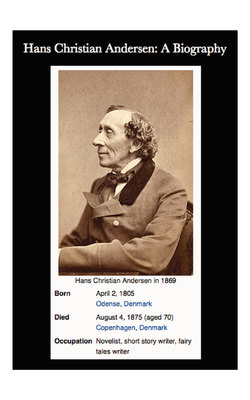Читать книгу Hans Christian Andersen - Mariena Foley - Страница 7
Travelogues
ОглавлениеIn 1851, he published to wide acclaim In Sweden, a volume of travel sketches. A keen traveler, Andersen published several other long travelogues: Shadow Pictures of a Journey to the Harz, Swiss Saxony, etc. etc. in the Summer of 1831 (A Poet’s Bazaar (560), In Spain, and A Visit to Portugal in 1866 (The latter describes his visit with his Portuguese friends Jorge and Jose O’Neill, who were his fellows in the mid 1820s while living in Copenhagen.) In his travelogues, Andersen took heed of some of the contemporary conventions about travel writing; but always developed the genre to suit his own purposes. Each of his travelogues combines documentary and descriptive accounts of the sights he saw with more philosophical excurses on topics such as being an author, immortality, and the nature of fiction in the literary travel report. Some of the travelogues, such as In Sweden, even contain fairy-tales.
In the 1840s Andersen’s attention returned to the stage, however with no great success at all. His true genius was however proved in the miscellany the Picture-Book without Pictures (1840). The fame of his fairy tales had grown steadily; a second series began in 1838 and a third in 1845. Andersen was now celebrated throughout Europe, although his native Denmark still showed some resistance to his pretensions. Between 1845 and 1864, H. C. Andersen lived in 67, Nyhavn, Copenhagen, where a memorial plaque is placed.
